Medical expert of the article
New publications
Preparations
Ointments and creams for corns
Last reviewed: 03.07.2025

All iLive content is medically reviewed or fact checked to ensure as much factual accuracy as possible.
We have strict sourcing guidelines and only link to reputable media sites, academic research institutions and, whenever possible, medically peer reviewed studies. Note that the numbers in parentheses ([1], [2], etc.) are clickable links to these studies.
If you feel that any of our content is inaccurate, out-of-date, or otherwise questionable, please select it and press Ctrl + Enter.
Corns often appear on the skin of the feet - these are very painful formations that can bother you with their manifestations for years. Since they do not have roots or rods, they do not reach the deep skin layers - so you can fight them yourself. Using, for example, ointments or creams for corns.
This is a remedy that will help get rid of rough skin on your feet without medical intervention. You can buy cream or ointment at a pharmacy without a prescription, or in cosmetics stores.
A corn or callus is a compacted upper layer of dead skin cells on the feet. Such formations can occur as a result of mechanical irritation and pressure on the skin, because blood circulation is disrupted and the skin in areas of greatest friction becomes keratinized. Most often, such compactions appear at the base of the toes, on the so-called pad, on the heels, and on the back of the big toe. When walking, such formations can cause discomfort, a burning sensation, and pain.
The causes of calluses may be incorrectly chosen shoes (narrow, with a hard insole, very high heels), excess weight, poor circulation in the legs, excessive sweating of the feet. The presence of calluses can be determined by their appearance. This is a hard and dry formation on the skin with a grayish or yellowish tint, not particularly sensitive to touch.
If the callus does not cause pain, then it does not need treatment. However, if discomfort is still present, it is worth paying attention to this, because this disease does not go away on its own and is subject to treatment.
 [ 1 ]
[ 1 ]
Indications for use
Indications for the use of ointments for corns are callus compactions of keratinized skin cells that appear due to rubbing of the foot and increased pressure on it during physical exercise, due to wearing too narrow shoes or high heels, constant walking on hard surfaces barefoot. Corns are only slightly larger than calluses in size. They occur at the base of the toes, as well as on the heels. They manifest themselves when walking in the form of pain and burning.
Pharmacodynamics
The active ingredients of Vishnevsky ointment are xeroform and birch tar, the auxiliary component is fish oil or castor oil (these components can ensure that the active substances penetrate deeper into the skin layer).
Xeroform has an astringent, antimicrobial, drying effect. This substance can also have a bactericidal effect - due to the fact that bismuth tribromophenolate can oxidize sulfhydryl groups of bacterial enzymes, contributing to their death. Phenol, which is in xeroform, destroys the structure of the bacterial cell membrane, and also denatures proteins in it.
Proteins of inflamed tissues, interacting with xeroform, undergo partial coagulation, during which albuminates are formed, turning into a protective film. This can slightly numb the inflamed area of skin, dry its surface, and at the same time reduce the permeability of blood vessels.
Birch tar also contains phenol, which is an antiseptic. Tar irritates skin receptors, causing blood flow to the site of inflammation. This accelerates the process of resorption of infiltrates, as well as the removal of sulfur particles and pus. Thanks to these processes, damaged tissues are restored.
Names of ointments and creams for corns
Typically, the following medications are used to treat corns and dry calluses on the feet:
- Salicylic ointment, which is used as the main medicine for treating skin diseases;
- Chinese corn plaster is a red plate with ointment applied to it;
- Corns and dry calluses are well removed with beeswax, which is mixed with lemon juice and propolis;
- Verrucacid;
- Ointment Balsamed Basal. Its use makes the skin smooth, soft, well-groomed and healthy;
- Jin Ji Hou Ke ointment;
- Antimozolin;
- A combination ointment based on 3 components – petroleum jelly, salicylic acid and benzoic acid.
Ointment for corns usually contains salicylic acid, which is considered the main element of most drugs against this disease.
There are many names for ointments for corns - for example, 10% salicylic ointment is excellent for combating problems of this kind, giving a very good softening effect, especially if used in combination with other active ingredients - such as benzoic acid.
Often, over-the-counter anti-corn ointments contain glycolic acid, which has an antiseptic and antifungal effect.
Also very effective in the fight against calluses are the well-known Vishnevsky ointment and keratolytic ointment.
The best ointment for corns on the feet is salicylic, although there are other preparations (but they are also made on the basis of salicylic acid). It should be used carefully, avoiding contact with healthy skin. To fulfill this condition, you need to buy a special patch, or make a hole for the corn in a regular patch. It should be glued so that the formation fits completely into the hole, and is surrounded on all sides by the patch. Having lubricated the corn with ointment, you need to seal it with another patch on top. This method of applying the drug will be the safest.
Salicylic ointment is applied to the callus 1-2 times a day. The course of treatment should not last more than 28 days. There are also anti-callus patches that are glued to the formation and removed after some time with the dead keratinized tissue already separated.
The ointment for corns has both advantages and disadvantages. Both the pros and cons of the drug should be highlighted. Among the advantages:
- Ointments are available without a prescription and are also inexpensive;
- The product is very compact – you can carry it everywhere in your bag;
- High efficiency and fast action.
Disadvantages of ointments for corns:
- It must be applied very carefully and gently so as not to get it on a healthy area of skin;
- In advanced cases of the disease, the ointment is not very effective;
- Sometimes the drug can cause an allergic reaction.
Ointments and creams for dry calluses and corns
There is an opinion that calluses that do not cause pain do not need to be treated, although this is wrong. In addition to the fact that such feet do not look very nice, it is not a fact that discomfort and pain will not appear after some time. Calluses and corns that appear should be removed from the skin as quickly as possible.
The cream has an acidic pH, which makes it possible to soften rough skin of the feet, dry calluses, corns. The composition includes urea and glycolic acid, which cleanse hard, dry skin. Tea tree oil and ethenol have antiseptic properties, and camphor and menthol deodorize, refresh and soothe.
The cream has no contraindications.
It is recommended to use the cream 1-2 times a day, massaging it into rough areas.
Shelf life is 3 years.
Ointment for corns from lactic acid - softens the keratinized tissue. Such preparations do not act as aggressively as salicylic ones. The application procedure is carried out as follows - the ointment is applied to the corn in a thick layer, after which the foot is wrapped in wax paper and woolen socks are put on. After 2 hours, the softened callus is scraped off using a special file. The remaining ointment should be washed off with warm water. The procedure should be repeated in a day or two.
Salicylic ointment
Salicylic ointment is very effective in combating various skin diseases. Among them are calluses, warts, corns, acne. The main active ingredient of the drug is salicylic acid. It has a strong anti-inflammatory and antiseptic effect. Thanks to the active ingredient of the ointment, corns and calluses on the skin of the feet quickly soften.
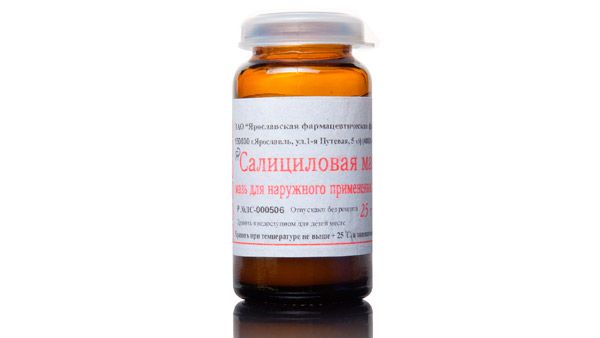
Nowadays it is manufactured industrially, although initially this component was derived from natural raw materials - willow bark. In addition to the anti-inflammatory effect, the ointment for corns has a keratolytic effect - it exfoliates the skin, thereby promoting its restoration.
Vishnevsky ointment
Vishnevsky ointment is an effective antiseptic drug, which contains such components as tar, castor oil, and xeroform.
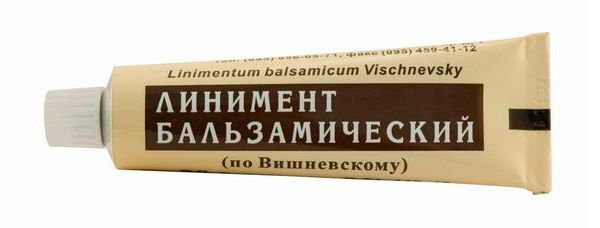
This medicine has many medicinal properties and can be used in many areas. It is often used as a means of eliminating inflammatory processes that occur with boils and other abscesses. It also restores tissue after frostbite, burns or bedsores, and can dry out the skin when acne forms on it. It can also be used as an ointment for corns and trophic ulcerative lesions of the legs. It is used in the treatment of thrombophlebitis.
Keratolytic ointment for corns
Keratolytic ointments for corns usually include salicylic acid, which has an antiseptic effect. Corns themselves are a cluster of dead cells that appeared as a result of the skin's protective reaction to mechanical pressure exerted on it. With the help of salicylic acid, these cells are softened, after which they are easy to remove.
In addition to salicylic acid, keratolytic ointment for corns includes the following substances - Vaseline, lanolin, herbal extracts. Each of these components has a softening effect.
Keratolytic drugs can be bought at any pharmacy, they are sold without a prescription. In addition, among all the drugs against corns, they are the most effective.
Advantages of keratolytic ointments for corns:
- They contain only natural ingredients;
- They act quickly and effectively on the painful formation;
- With their help, you can remove corns yourself;
- Low cost.
Disadvantages of ointments:
- Healthy areas of skin around the callus should be protected from ointment to avoid getting a burn or wound;
- If there is an individual sensitivity to any components of the drug, an allergy may occur;
- The ointment should be applied regularly, without skipping procedures.
The best ointment for corns often contains additional substances that can soften the callus. These are mainly oils of plant origin. To increase the effectiveness of these components of the ointment, before using it, you need to steam your feet in a soda-salt bath.
Cream healer
The Lekar cream is used in the process of skin care on the feet. It is used for dry calluses and corns, as well as peeling skin and microcracks that appear on the heels. Thanks to its unique formula, this ointment for corns with urea can immediately replenish the moisture deficit.
The cream contains a complex of medicinal herbs, urea, vitamin E and other auxiliary substances that have a softening, antiseptic and wound-healing effect.
Another component of the preparation – tea tree oil – will make the skin softer, and oak bark and celandine extracts will relieve pain and fatigue, and also heal wounds.
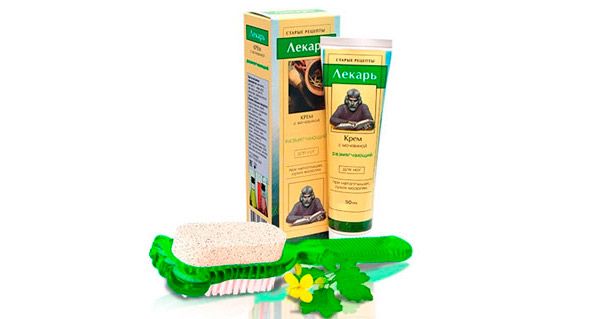
Indications for use: corns, dry calluses, cracks and peeling of the heels. Apply the cream to clean skin once a day.
Contraindications: individual intolerance to the components of the cream.
Overdose may cause redness and rashes on the skin.
Store the cream at a temperature from 0ºС to +25ºС in a place inaccessible to children. Avoid direct sunlight.
Shelf life is 3 years.
Avon Cream
The active ingredients of the cream are glycerin, lactic acid, menthol, peppermint oil, which effectively soften corns and calluses.

Indications for use: a cosmetic product for combating calluses and rough skin on the feet.
Apply the cream once a day with massage movements to rough areas of skin, previously cleaned.
Avoid exposure to direct sunlight. Store at temperatures from 0ºС to +25ºС in a place inaccessible to children.
Shelf life is 3 years.
 [ 2 ]
[ 2 ]
Aquapilling
The cream contains urea in a concentration of 25%, which effectively combats calluses, rough and dry skin of the feet, and heals cracks.
Indications for use: hyperkeratosis of the elbows, knees, feet, elimination and prevention of calluses and corns.
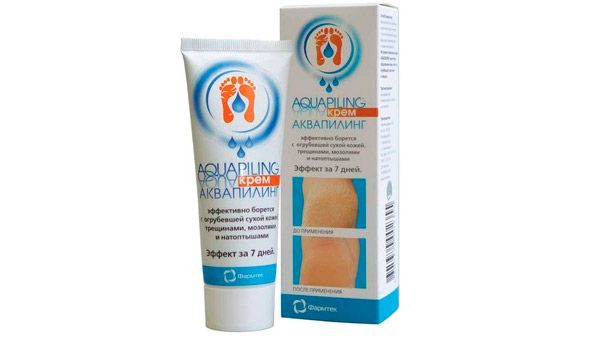
Aquapilling cream is used in combination with Aquapilling solution or as an independent remedy 1-2 times a day for 7 days or more, until the callus disappears completely. The duration of use of the cream is unlimited.
There are no restrictions on use during pregnancy or breastfeeding.
Overdose may cause redness and rashes on the skin.
Store at a temperature of 5°C to 25°C, out of reach of children.
Shelf life is 3 years.
Cream School
The cream helps restore the natural elasticity of the skin of the feet, softens, has an antiseptic and wound-healing effect. Lanolin, which is part of the cream, promotes natural skin hydration. Does not contain fragrances.

Can be used during pregnancy and breastfeeding.
Method of application and dosage: apply the cream twice a day to dry and clean skin with massage movements. The period of application is not limited, until complete recovery.
Overdose may cause redness and rashes on the skin.
Store in a dark place, out of reach of children, at a temperature of up to 25°C.
Shelf life is 3 years.
Creams for corns produced by Altai
The unique formula of the cream effectively helps to fight corns, cracks and calluses. Urea, natural soy and coconut oils, mint oil and menthol, horse chestnut extract - all these components that are part of the cream, soften and nourish the skin, eliminate swelling, soften calluses.
The use of the cream during pregnancy is not contraindicated; it can also be used for diabetes and obesity.
It has no side effects.
The cream can only be used on the surface of the feet, rubbing into dry, clean skin of the feet until completely absorbed 1-2 times a day.
Shelf life is 3 years.
 [ 5 ]
[ 5 ]
Cream Oriflame (Oriflame)
The cream provides deep hydration of the feet from the first day of use. The improved formula with shea butter helps effectively combat calluses, and salicylic acid helps the process of cell regeneration. Peppermint oil and an intensive care complex smooth out rough skin of the feet and moisturize them well.
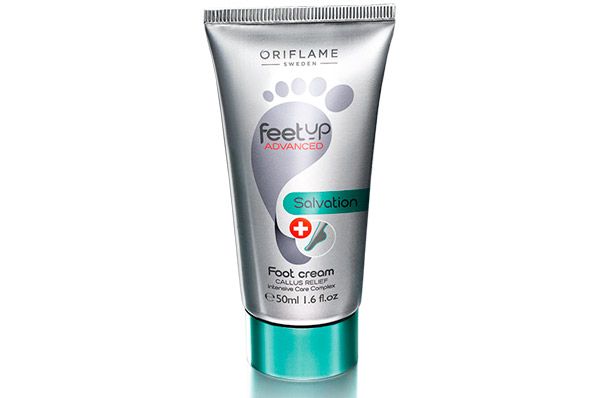
Not contraindicated during pregnancy and breastfeeding.
There were no cases of overdose.
Directions for use and dosage: Apply the cream 1-2 times a day to dry and clean skin with massage movements. Use until complete recovery.
Shelf life is 3 years.
How to use corn remedies
Salicylic ointment for corns is applied to the affected skin 1-2 times a day. It can be initially spread in a thin layer (about 0.2 g per 1 cm 2 ) without rubbing and covered with a sterile napkin on top. In cases where touching the skin causes pain, you need to soak a sterile gauze bandage with this ointment and apply it to the corn. This procedure must be repeated 2-3 times a day.
Beeswax - take 30 g of wax and 50 g of propolis, add lemon juice to them (1 lemon is enough). The resulting mixture is turned into cakes that need to be applied to the formation, securing with a plaster. After a few days, the callus is softened in a 2% soda solution, which allows it to be easily removed.
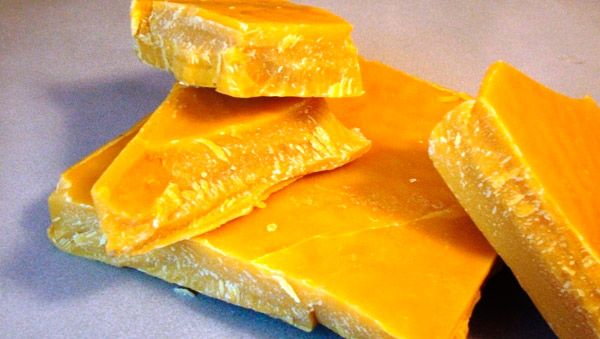
Balsamed Basal should be applied daily to dry, cleansed skin, rubbing in with massaging movements.
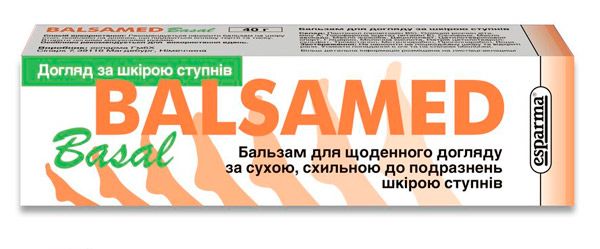
Verrukatsid is applied to the affected area using a thin wooden stick or a special applicator. Avoid contact with healthy skin. The procedure must be performed 3-4 times, with 3-4 minute intervals between them.
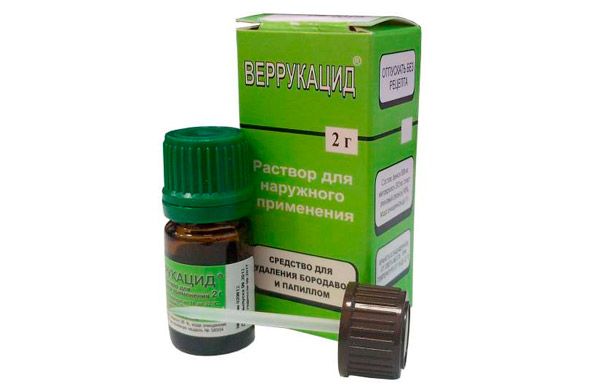
Apply a thick layer of Super Antimozolin ointment to the affected area, then cover with film or waxed paper and secure with a bandage. Change the bandage every day, also removing softened parts of the skin. Apply the preparation until the corns disappear completely. Then use the ointment as a preventive measure.
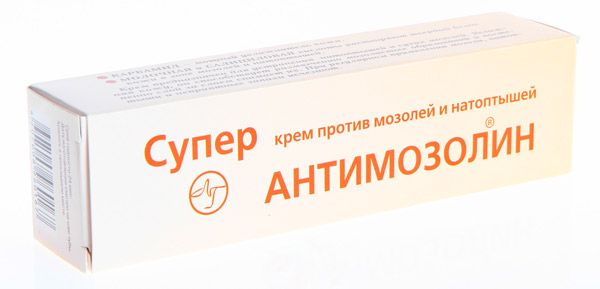
An ointment with benzoic and salicylic acid, as well as Vaseline, is applied to problem feet. The preparation should be carefully applied in a thin layer twice a day until the keratinized part of the skin completely disappears.
Jin Ji Hou Ke ointment is used as follows: it is applied to the skin 1-2 times a day using a cotton swab. The procedure must be repeated until the callus is completely removed.
Using Ointments and Creams for Corns During Pregnancy
The use of ointments and creams for corns during pregnancy is usually not prohibited, but there are some exceptions. This is, for example, salicylic ointment - due to the fact that salicylic acid can be absorbed into the bloodstream. But if necessary, pregnant women can use this drug, but in an amount of no more than 1 g during a single treatment of the affected area of the skin.
It is also not recommended to use Verrukacid ointment for corns, but in some cases, if the expected therapeutic effect exceeds the possibility of complications for the fetus, it is allowed to be used.
Contraindications for use
Salicylic ointment is contraindicated in case of renal failure or allergy to the components of the drug. It should also not be used by infants.
Beeswax should not be used if you are allergic to it.
The drug Verrukacid should not be used on birthmarks and moles if the size of the skin lesion exceeds 20 cm2 , or on children under 7 years of age.
The ointment for corns with Vaseline, benzoic and salicylic acid should not be used by those who have hypersensitivity to the above components. It also cannot be applied to the skin in places where its integrity is damaged.
Chinese corn plaster should not be used if there are any damage to the integrity of the skin or individual sensitivity to the components of the drug.
Side effects
Side effects of ointments for corns (for example, salicylic) are quite few and very rare. Among such manifestations: burning, itching, skin rashes, and also some allergic reactions. If you have an allergy to salicylic ointment, you should stop using it.
Verrukacid may have side effects such as redness and swelling, which go away on their own.
The ointment mixture of petroleum jelly, salicylic acid and benzoic acid may cause side effects such as skin irritation in the areas where the ointment is applied.
Overdose
There have been no cases of overdose of corn ointment at this time. If any corn ointment gets into the stomach for any reason, it should be immediately washed out using cool boiled water.
Interactions with other drugs
Salicylic ointment should not be combined with products containing resorcinol, as this creates a melting mixture. In addition, the ointment should not be mixed with zinc oxide, as this results in the formation of an insoluble salt. Salicylic acid, when combined with any medications used externally, enhances the absorption of the latter into the bloodstream, thereby increasing the permeability of the skin for other drugs. Among them are glucocorticoid hormones, often included in various ointments (Triderm, as well as Dexamethasone, etc.). Salicylic ointment can also increase the severity of side effects of hypoglycemic agents, as well as sulfonylurea and Methotrexate.
The components of Verrukacid quickly dissolve in other ointments, so you should not apply them to areas of skin that have been treated with this product.
Storage conditions
Storage conditions for Verrukacid - keep in a place closed to children, protected from sunlight. Storage temperature: 18-22 °C.
Basalmed Basal is stored in places protected from light at a maximum temperature of 25 °C.
Chinese corn plaster should be kept in a cool and dry place.
Salicylic ointment for corns should be stored at a temperature of no more than 20 degrees. After opening the jar, it should be kept in a warm, dry place where sunlight does not penetrate. It should not be put in the refrigerator under any circumstances. Also, the storage place should be inaccessible to small children. Do not allow moisture and dampness to affect the ointment. It is best to store the ointment in its original packaging.
Best before date
Verrukacid ointment for corns can be stored for 5 years. The drug is prohibited to use after the expiration date indicated on the original packaging.
Chinese anti-corn plaster has a 3-year shelf life.
Salicylic ointment can be used for 2 years from the date of its release.
Creams and ointments for corns are effective means of combating rough skin, cracks, and dry calluses. The products help soften the skin and easily remove dead cells, and the essential oils they contain moisturize the skin well.
Attention!
To simplify the perception of information, this instruction for use of the drug "Ointments and creams for corns" translated and presented in a special form on the basis of the official instructions for medical use of the drug. Before use read the annotation that came directly to medicines.
Description provided for informational purposes and is not a guide to self-healing. The need for this drug, the purpose of the treatment regimen, methods and dose of the drug is determined solely by the attending physician. Self-medication is dangerous for your health.

